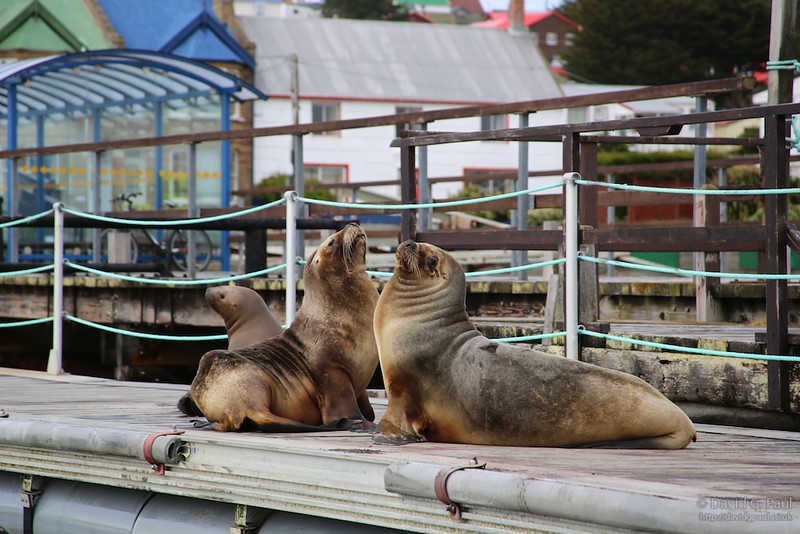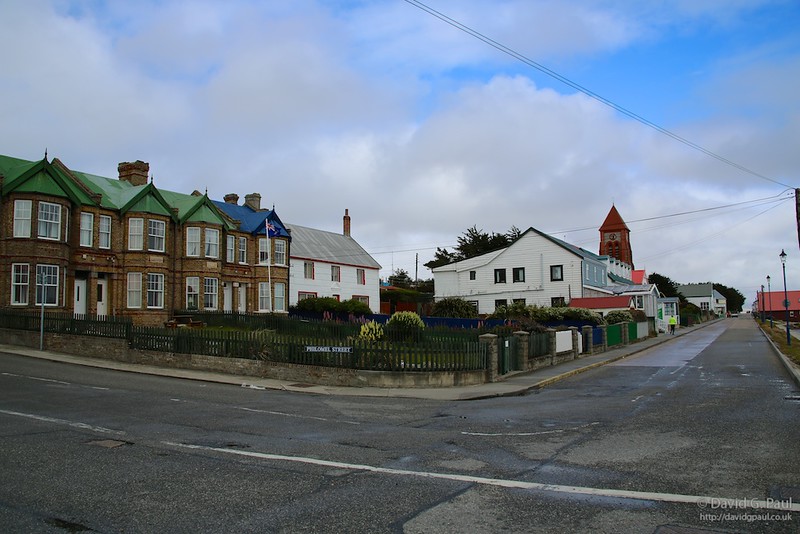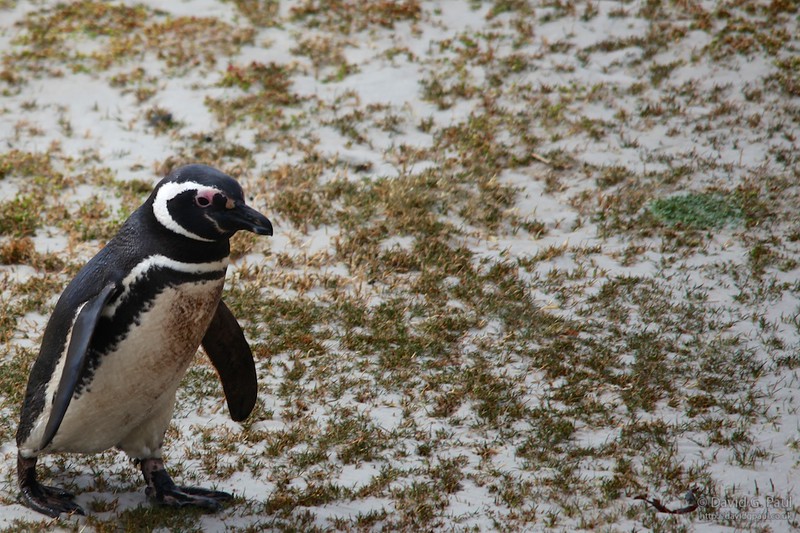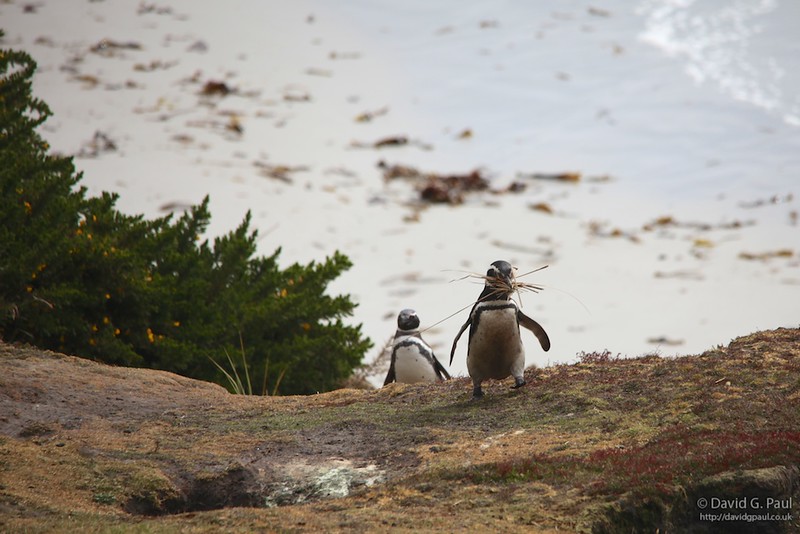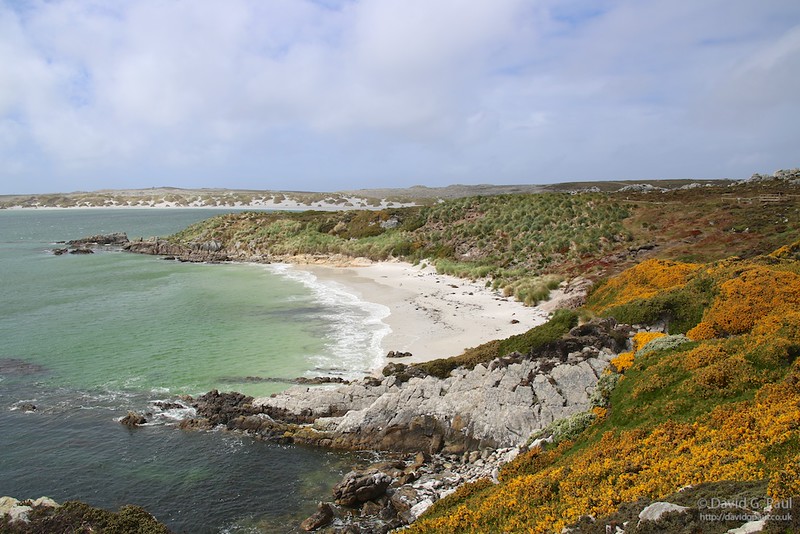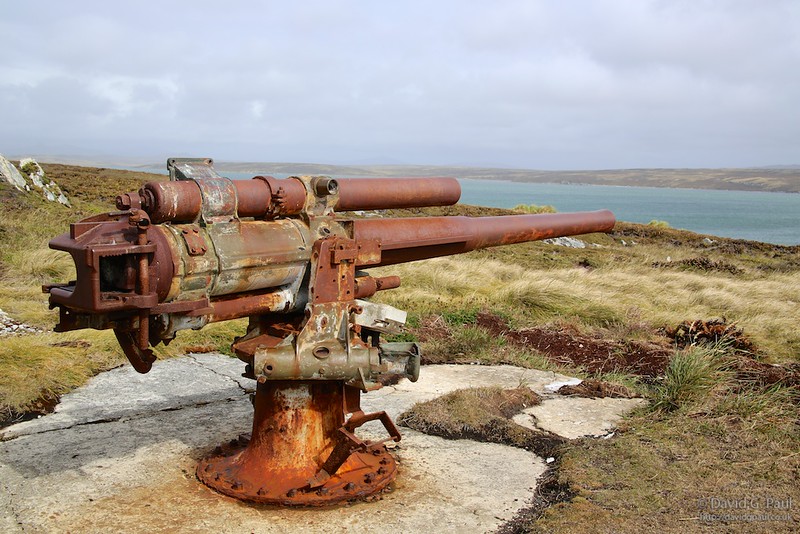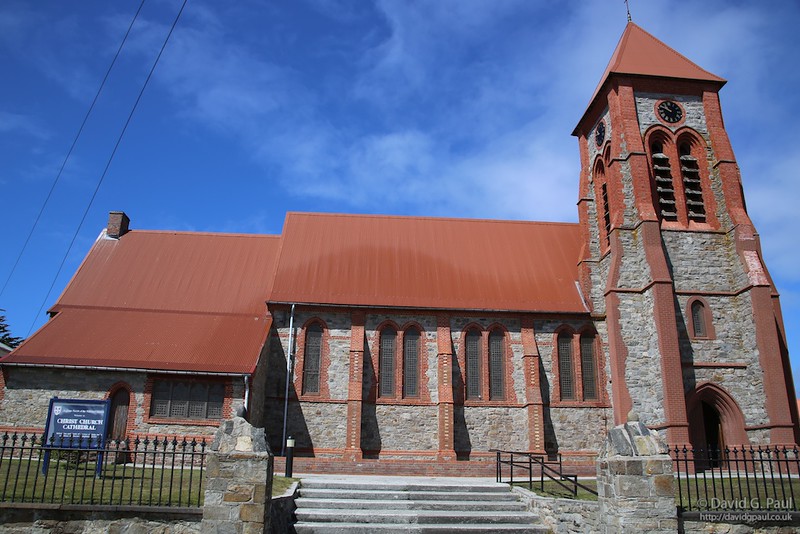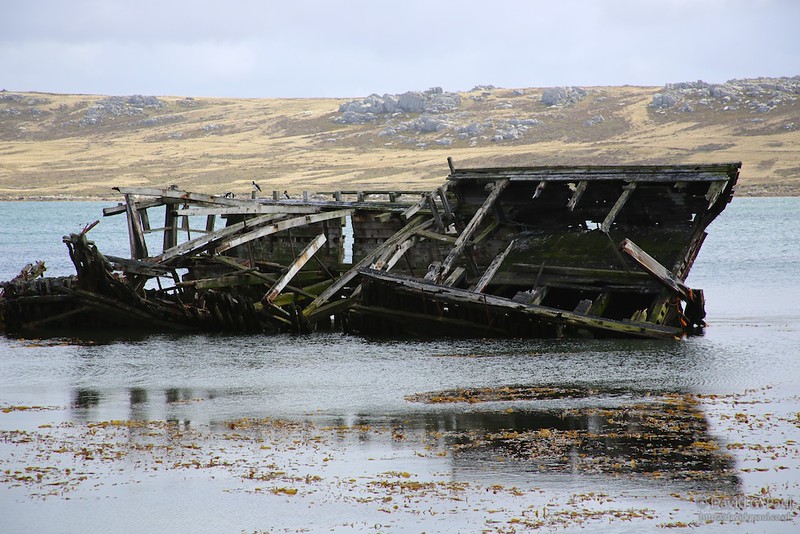By the time we got the 07:00 wake-up announcement we were approaching Stanley harbour. As we wanted to fit a lot in we rushed to get ready and have breakfast so we could be the first ones to land. Sure enough we got onto the first boat and were the first onto land.
When we got there we were greeted by seals on the pier, though apparently they didn’t hang around for long after the first zodiac arriving. The tourist information centre was closed so we couldn’t get a map as had been suggested, or book a taxi. Fortunately a local offered to book a taxi for us, but when it arrived another group took it.
Apparently there are only two taxis on the island so would take quite some time to take everyone who wanted to go to Gypsy Cove. The reason a lot of people wanted to go there was due to reports that there were Magellanic penguins there. Eventually a taxi turned up and it took us through the industrial estate, past the rusty shipwreck of the Lady Elizabeth in Whale Bone Cove, and finally over the hill to Gypsy Cove. It cost US$20 for a return journey per passenger, so considering there were four of us at the time the driver must have been doing quite well.
For the next hour and a half we wandered around the cove, but couldn’t get down to the beach due to it being fenced off. The reason for this was that the Argentinians placed landmines on the beaches and although this beach had been cleared it was possible for more to be washed ashore; so wouldn’t be safe for walking around. On the beach we could see a large number of Magellanic penguins, two King penguins and some Upland Geese (also known as Magellan Geese). It was also lucky that the sun had come out and the weather had warmed up making the cove look pretty great.
A few minutes down the path we also came across Ordnance Point – a spot where you can find a World War II gun emplacement. This rusty old gun was placed on the Falklands Islands to protect them from the Germans alongside the Falkland Islands Defence Force (FIDF) whilst over 150 men and women went to Britain to help in the war effort. The Falkland Islands still had to be protected to protect Britain’s interests in Antarctica, and itself would have made a good fuelling base in the Atlantic.
At 10:30 the taxi returned for us and took us back to the port where we’d been picked up from – the amount of time we’d had at Gypsy Cove was about right for what was there. We then headed in the direction of the museum, but made a few stops in gift shops and the post office along the way. The route takes you passed a memorial to those that died during the 1982 conflict, and along the seafront where you can see another shipwreck.
The museum was £3 to go around though wasn’t really that big. There was various memorabilia from the island in general but also a fair bit on the 1982 conflict with Argentina. One wall was also dedicated to the recent referendum they had to determine if they wanted to be British still. Of the majority turnout all but 3 people voted yes for staying British, and one person invalidated their ballot paper. You could understand why they’d want to remain British. Everything about the place felt British: the accents, he currency, the style of buildings, the police uniforms, and even the opening hours of their post office.
We then got onto one of the last zodiacs back to the Plancius, which was a pleasantly smooth ride, and headed straight for lunch. Today’s buffet meal consisted of beef goulash and rice, but there was also salad without dressing – which was nice. Once the meal was over they weighed anchor and set off on the journey that would last the next two days to South Georgia.
In the afternoon there was a session in the lounge for teaching people how to take better photographs. I did stop by briefly to see what it was like, but there wasn’t really anything special discussed in the session. Most of what was talked about was the composition of photographs, though they did briefly mention the importance of light.
A little later in the afternoon whilst the sea was particularly rough, there was a session that talked about rockhopper penguins, the night the Argentinians invaded the Falkland Islands, and finally about the Black-browed Albatross.
By the time this was over it was time for dinner, which consisted of duck with some vegetables. We then sat and chatted with some of the others until it was time for one of the guides to give a brief talk. The guide explained how he does work for a museum, cataloging species from collections, and mentioned that even for newly discovered species they need the skin of the species to use as a reference for them before they can be officially recognised. This means collecting and cases where one cannot be found already dead, killing one of them. I don’t really agree with this method as it seems backward for our current level of technology and by comparison seems barbaric.
In my opinion it would be better to take DNA samples from a random number of them and to produce 3D models from scanners that could produce a model based upon the average between those sampled. I would hope this is something that the organisation responsible for recording species has already thought of.
